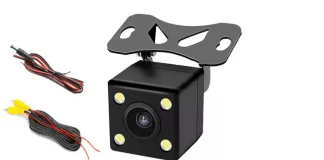What is future-proofing of an android headunit?
And Should I do it?
Future-proofing ensures that your Android headunit does not become obsolete before you are ready or willing to upgrade it. Well, at least to your best ability.
Android Phones vs Android Headunit
The most significant difference to an Android headunit is that your phone needs to be very secure. Your phone could quite possibly contain access to your entire digital life. Keeping your phone secure is essential, so OS and firmware updates are often automatically applied.
Vive la difference
Android headunits are different. If you have followed our setup procedure, your Android headunit is not the main focus of your Google account. There is no PIN lock, fingerprint recognition, or retinal scanner on an Android headunit, so it is considered insecure. Keeping on top of the latest Android OS and firmware patches is unnecessary for an Android headunit. Lucky because Android updates are not sent to or made available for Android headunits.
You can’t future-proof your Android headunit with Android updates.
Flashing is not recommended.
Flashing updated or custom firmware to an Android headunit is not advised. You need to know what you are doing; most don’t. The failure rate is high, and the failure mode is ‘bricked.’ Bricking an android headunit is making it as useful as a house brick and has no way back. You would need to buy a new one. The advantages of flashing are minimal. Very little is to be gained with custom firmware, some fixes, and maybe better use of limited RAM. But some things may stop working, and if the RAM is limited, it is time to upgrade to modern hardware if you want to run modern apps.
Add a stick of RAM?
It is not possible to add more RAM or upgrade the processor in an Android headunit. In the same way, you need to replace your phone when it gets slow; your only option is to replace the Android headunit.
This is not a suggestion that is often accepted, and using the slow and frustrating Android headunit continues. It is better to invest in a future-proofed android headunit to continue receiving the benefits for many years. This will avoid replacing a working Android headunit just because it has become obsolete.
How do you future-proof an Android headunit, then?
Android apps require faster and better devices as they become more memory-hungry and processor intensive. Not a problem for phones with an 18-month to 2-year life cycle. But you would expect at least 5 years and more service from a replacement Android car stereo.
The future of apps
Apps of next year will generally need more RAM to function smoothly than the apps of last year. As new features are added, a faster processor becomes much more critical.
Android versions
As a part of future-proofing your Android car stereo, the advice is to stick with double-digit Android versions. Android 10 and above is good. Don’t focus on the numbers; just look for the double digits.
Solution
When choosing an Android headunit, the solution is to aim for the fastest processor and have at least 4 Gb of RAM. These specifications will have a better chance of keeping up with future apps. Much better than a very slow 8227L quad-core processor from 2015 and 1 GB RAM. Typically those quad-core android headunits are already doomed to an early end of life through self-inflicted obsolescence. Whereas the PX5, UIS7862, and PX6 with 4 GB RAM or, better still, 6 GB RAM are the best chance for keeping up with future apps.
Will it ever end?
Will it never end the cycle of upgrading? No!
Processor speeds for mobile devices have been improving year after year, thanks to Moores’s Law, Intel, and ARM, keeping the processor speeds for the next generation of Android Headunits quicker than the last.
Starting your journey well ahead of the MTK8227L (8227l_Demo) Quad-cores will give you the best chance of future-proofing your Android headunit purchase.
Code Word: 4Gb PX6 or UIS7862 6Gb and Snapdragon 662
When you want to replace your car stereo with something that gives free SatNav maps, a reversing camera, DAB+, TPMS, and Spotify, pick an Android headunit that will keep up with the apps. Look for PX5, PX6, and UIS7862 with 4Gb, 6Gb, or 8Gb RAM in our reviews, and you will not need to worry about the apps for many years to come.







